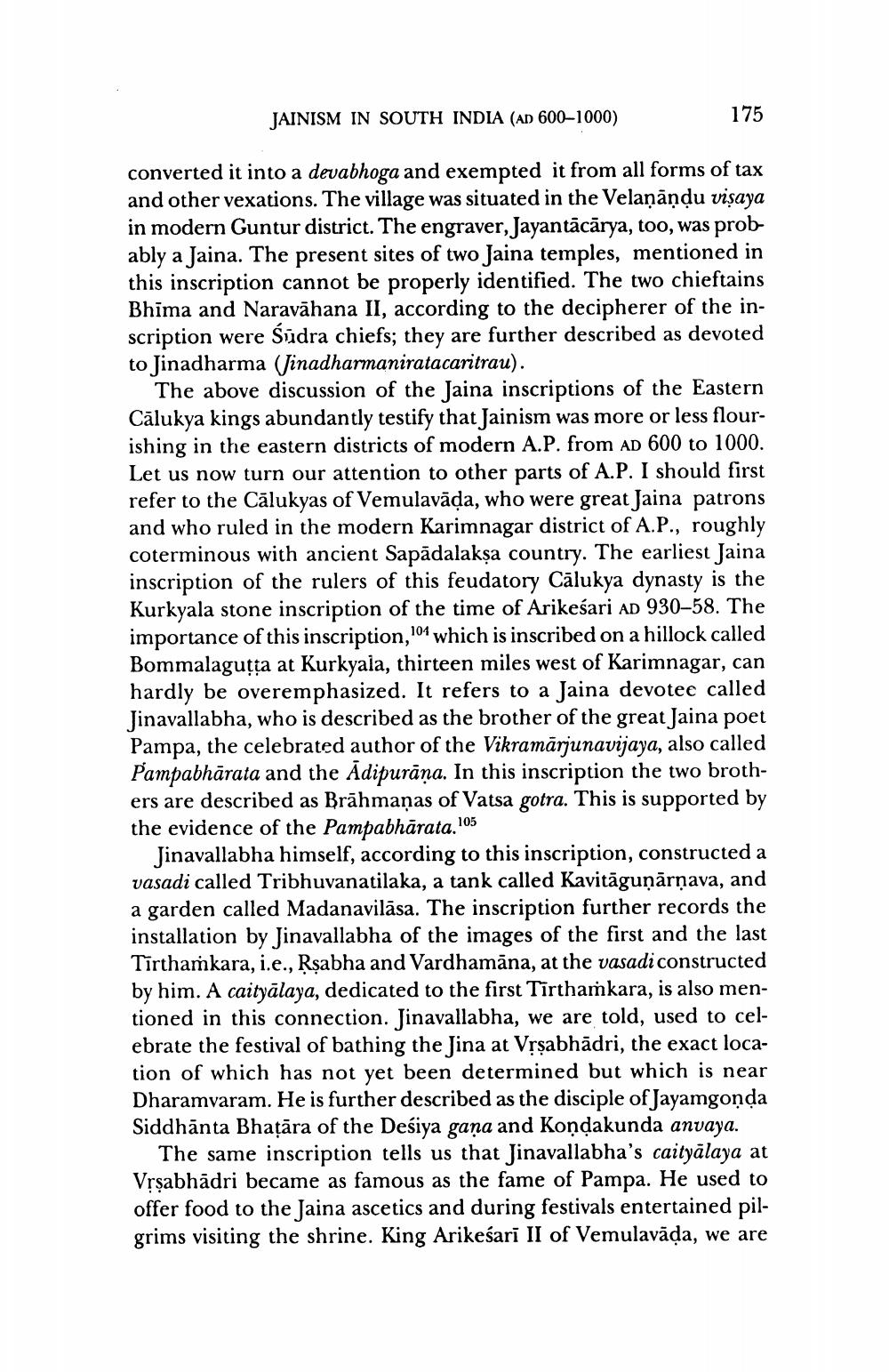________________
JAINISM IN SOUTH INDIA (AD 600–1000)
175
converted it into a devabhoga and exempted it from all forms of tax and other vexations. The village was situated in the Velaņāņdu visaya in modern Guntur district. The engraver, Jayantācārya, too, was probably a Jaina. The present sites of two Jaina temples, mentioned in this inscription cannot be properly identified. The two chieftains Bhima and Naravāhana II, according to the decipherer of the inscription were Sūdra chiefs; they are further described as devoted to Jinadharma (Jinadharmaniratacaritrau).
The above discussion of the Jaina inscriptions of the Eastern Cālukya kings abundantly testify that Jainism was more or less flourishing in the eastern districts of modern A.P. from AD 600 to 1000. Let us now turn our attention to other parts of A.P. I should first refer to the Cālukyas of Vemulavāda, who were great Jaina patrons and who ruled in the modern Karimnagar district of A.P., roughly coterminous with ancient Sapädalakṣa country. The earliest Jaina inscription of the rulers of this feudatory Cālukya dynasty is the Kurkyala stone inscription of the time of Arikeśari ad 930–58. The importance of this inscription, 104 which is inscribed on a hillock called Bommalaguțța at Kurkyala, thirteen miles west of Karimnagar, can hardly be overemphasized. It refers to a Jaina devotee called Jinavallabha, who is described as the brother of the great Jaina poet Pampa, the celebrated author of the Vikramārjunavijaya, also called Pampabhārata and the Adipurāņa. In this inscription the two brothers are described as Brāhmaṇas of Vatsa gotra. This is supported by the evidence of the Pampabhārata.105
Jinavallabha himself, according to this inscription, constructed a vasadi called Tribhuvanatilaka, a tank called Kavitāguņārņava, and a garden called Madanavilāsa. The inscription further records the installation by Jinavallabha of the images of the first and the last Tīrthamkara, i.e., Rşabha and Vardhamāna, at the vasadi constructed by him. A caityālaya, dedicated to the first Tirthamkara, is also mentioned in this connection. Jinavallabha, we are told, used to celebrate the festival of bathing the lina at Vrsabhādri, the exact location of which has not yet been determined but which is near Dharamvaram. He is further described as the disciple of Jayamgonda Siddhānta Bhatāra of the Desiya gana and Kondakunda anvaya.
The same inscription tells us that Jinavallabha's caityālaya at Vrṣabhādri became as famous as the fame of Pampa. He used to offer food to the Jaina ascetics and during festivals entertained pilgrims visiting the shrine. King Arikeśarī II of Vemulavāda, we are




